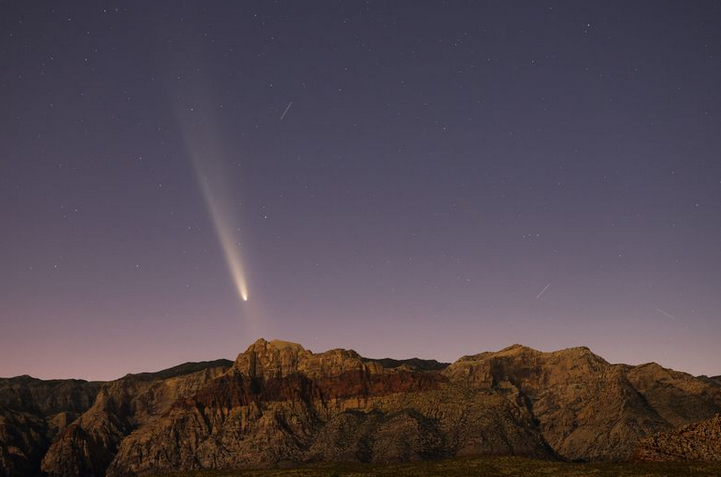Comet A3 visible in skies above this month – here’s what to look out for…

The comet, named A3 Tsuchinshan-ATLAS, last passed Earth 80,000 years ago and will make a regular appearance until October 30, Its brightness and visibility mean that many across the UK and of course, Glasgow will be able to see the comet, which is thought to have originated from the Oort Cloud, a giant spherical shell surrounding our solar system.
The Royal Astronomical Society’s RAS Dr Robert Massey said that Saturday night (October 12) had been the “opening of the window to try” and see the comet in the UK.
Excited to find out if we would be able to see it above Glasgow, we asked Scottish night sky blogger and author Andrew Allan.
Andrew, who runs Scotland’s Night Sky website, which features tips and guides on how to see and take photos of epic phenomena such as meteor showers and the Northern Lights, spoke to us about how to go about seeing the comet.
He said: “You can see Comet A3 due west near the horizon from about 7-8.30 pm for the next few days just after sunset.
“Nobody knows how long it’ll be in the sky for as the head and tail of the comet could dim down any time now. You can see the comet with the naked eye as it’ll appear like a small star but to get the detail on the tail of the comet, you’ll have to take an image with a camera and a good focal length lens.”
Speaking about how best to get a good photo of this incredible sight, he added: “Setting-wise it wouldn’t be hard as only a couple of seconds exposure would be needed due to the sunset/twilight skies that it’s located in.
“Your light sensitivity (ISO) wouldn’t have to be high either as it’s still relatively bright at this time of day. The tail of the comet is the most impressive as it stretches across the sky for a good distance.”
He did have a warning about those hoping to wait until it was a bit darker to see it, adding: “Unfortunately we are getting a bright moon as well as the week goes on so the earlier the better for capturing the comet.”
Speaking on the RAS’s website, Dr Massey said that there is a chance the comet could be visible with the naked eye, or at the very least with binoculars, but added that it won’t be as spectacular as Hale-Bopp was in the late 1990s.
He advised that people should use a better camera like a DSLR to capture the comet, but did add that holding a phone camera against the eyepiece of a small telescope could get you nice photos too.
